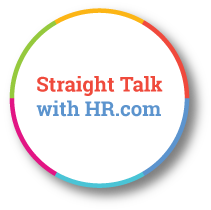Human-Centered Hiring In The Age of AI
Exclusive interview with Heidi Hagle, VP of HR, Stefanini
Posted on 05-19-2025, Read Time: 6 Min
Share:


 |
“Artificial intelligence (AI) or automation won’t replace human recruiters. Instead, recruiters who adopt these tools will have a distinct advantage over those who resist them. The future of recruitment isn’t about eliminating the human element — it’s about augmenting it with technology to work smarter, not harder,” said Heidi Hagle, Vice President of Human Resources at Stefanini (North America and APAC). |
As AI and automation continue to reshape how organizations operate, the world of talent acquisition is undergoing a rapid and necessary transformation. In an exclusive interaction, Heidi shares how Stefanini is leveraging generative AI, automation, and data analytics to create smarter, more efficient hiring practices — without losing sight of the people at the heart of the process. From enhancing recruiter productivity to building a more engaging candidate experience, Heidi offers candid insights on what it takes to future-proof talent acquisition and why embracing innovation is no longer optional, but essential.
Excerpts from the interview:
Q: How do you foresee the role of artificial intelligence (AI) evolving in talent acquisition over the next few years?
Heidi: In an industry where timing can make or break an opportunity, AI tools provide the agility teams need to quickly adapt to changes and respond to evolving needs. From identifying top talent to streamlining communication, it empowers recruiters to focus on what matters most — connecting the right candidates with the right opportunities.Our talent acquisition (TA) team at Stefanini has achieved measurable improvements by integrating our generative AI tools into their workflows. Our team has developed personalized prompts that have not only enhanced their productivity but have also allowed them to address challenges and change with agility. This tailored approach ensures that their daily tasks are performed with both speed and precision, two critical factors in the highly competitive recruiting landscape.
Q: What impact do you think automation will have on the recruitment process by 2025? Will it replace human recruiters or enhance their roles?
Heidi: We firmly believe that TA teams that embrace AI and automation will stand out from those that don’t. However, it’s important to emphasize that we do not foresee AI or automation replacing human recruiters. Instead, recruiters who adopt these tools will have a distinct advantage over those who resist them. The future of recruitment isn’t about eliminating the human element — it’s about augmenting it with technology to work smarter, not harder.AI and automation have the potential to revolutionize teams across all areas of expertise. A simple yet effective exercise is to take a step back and identify repetitive or manual tasks that could be automated. When given the opportunity to reevaluate workflows, every team and professional can uncover ways to increase productivity, freeing up time for more meaningful, high-value work. By embracing innovation, we can ensure that both individuals and organizations remain competitive in an ever-evolving business landscape.
Q: With advancements in data analytics, how do you plan to leverage insights from talent acquisition data to make more informed hiring decisions?
Heidi: Data always tells a story. One of the most critical chapters in that story is time-to-fill — a key metric that drives our recruitment strategy. The faster we can fill an open position, the sooner new hires can begin contributing to the organization, whether through revenue generation, operational improvements, or increased productivity. This metric underscores the importance of efficiency in recruitment while highlighting its direct impact on overall business performance.To support this, we have implemented multiple Power BI dashboards that provide actionable insights, enabling us to make more informed, data-driven decisions. These dashboards have already proven invaluable across various areas of the business, and we’re currently developing a dedicated global recruitment dashboard. This new tool will further refine our ability to analyze recruitment trends, identify bottlenecks, and continuously improve the hiring process.
Q: What are the current challenges in doing this now? How should the current data analytics technology evolve to meet the future demand?
Heidi: In today’s data-driven world, making major decisions requires access to accurate and reliable information. When the stakes are high, there’s no room for error — decisions must be backed by data that is not only correct but also actionable. However, ensuring this level of precision involves more than just collecting data; it requires a seamless integration of systems, meticulous data preparation, and ultimately, user adoption.One of the biggest challenges is the complexity of connecting multiple systems, each housing different data points, and integrating them into a centralized data lake. This process is critical for creating a holistic view of the business, enabling leaders to draw insights from a unified source of truth. However, the work doesn’t stop there. Simply having data is not enough — ensuring the data is clean, properly prepared, and ready for analysis is what makes it valuable.
However, even the best-prepared data can go to waste without one crucial element — user adoption. If the people within an organization don’t engage with the tools and insights provided by the data, the entire effort of integration and preparation risks being in vain. User adoption bridges the gap between data and decision-making, empowering teams to make informed choices and drive meaningful change.
In an era where data is king, organizations must focus not only on building robust data ecosystems but also on fostering a culture that encourages the use of data in everyday decision-making. With the right combination of technology, preparation, and user engagement, businesses can make the most of their data and make decisions that propel them toward success.
After all, data isn’t just a resource — it’s the foundation of smarter, faster, and more effective decision-making.
Q: How do you envision the role of soft skills in the hiring process evolving as AI and automation handle more technical aspects of recruitment?
Heidi: The human element remains indispensable in today’s world, with skills like complex problem-solving, emotional intelligence, adaptability, and lifelong learning having been essential for decades — and expected to remain so well into the future. Modern professionals are increasingly adept at leveraging advanced tools and technologies which, in turn, can free up time to refine crucial soft skills or explore new areas of personal and professional growth.The evolution of learning methods has made the process more agile and accessible, empowering individuals to continuously upskill and reskill to meet the shifting demands of the modern workforce. In doing so, they stay competitive, adaptable, and prepared for the challenges of an ever-changing world.
Q: What steps are you taking to enhance the candidate experience during the recruitment process, and how important will this be in 2025?
Heidi: As part of our 2025 strategy, we are implementing AI tools to improve how we attract and engage talent. This includes using our own AI platform to enhance key processes such as recruitment and onboarding. The goal is to make hiring more efficient, tailored to individual needs, and easier to navigate for candidates.Error: No such template "/CustomCode/topleader/category"!

